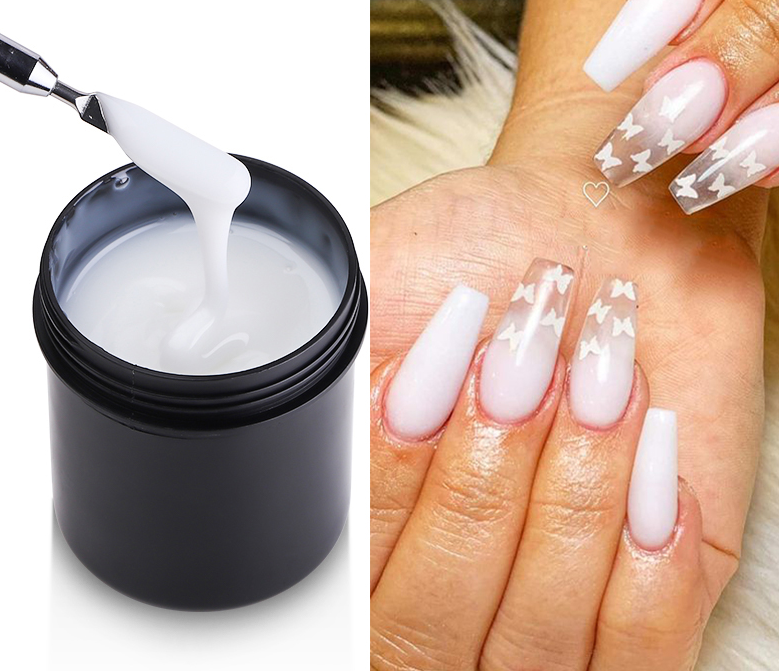Can Paris nails be removed easily at home?

While professional removal is recommended for optimal results, it is possible to remove Paris nails at home with proper care and techniques. In this essay, we will explore the various methods and steps involved in safely and effectively removing Paris nails at home. By understanding the process and following the recommended practices, individuals can maintain the health and integrity of their natural nails while transitioning from their Parisian manicure.
Understanding the Basic Components:
Before diving into the removal process, it is essential to understand the basic components of Paris nails. Paris nails typically consist of a base coat, color polish, and a topcoat. The type of polish used, whether traditional or gel, will determine the specific removal method required.
Removal of Traditional Polish: If the Paris nails were created using traditional polish, the removal process is relatively straightforward. The steps involved are as follows:
Gather the necessary supplies:
Acetone-based nail polish remover, cotton balls or pads, aluminum foil, and a cuticle pusher.
Soak the cotton balls or pads in the nail polish remover, ensuring they are saturated but not dripping.
Place a saturated cotton ball or pad on each nail, covering it completely.
Wrap each finger with a small piece of aluminum foil, securing it gently.
Allow the nails to soak for approximately 10-15 minutes to loosen the polish.
After the soaking period, gently remove the foil wraps from each finger.
Using a cuticle pusher, gently push off the softened polish from the nails, working from the cuticle towards the nail tip. Be careful not to apply excessive pressure to avoid damaging the natural nails.
If any residue remains, repeat the process or use a gentle nail buffer to remove any remaining traces.
Removal of Gel Polish:
If the Paris nails were created using gel polish, the removal process requires slightly different steps to effectively remove the gel. The gel removal process is as follows:
Gather the necessary supplies:
Acetone-based gel polish remover, cotton balls or pads, aluminum foil, a cuticle pusher, and a nail file or buffer.
Lightly file the surface of the gel polish to remove the shiny top layer. This step allows the gel polish remover to penetrate better.
Soak the cotton balls or pads in the gel polish remover, ensuring they are saturated but not dripping.
Place a saturated cotton ball or pad on each nail, covering it completely.
Wrap each finger with a small piece of aluminum foil, securing it gently.
Allow the nails to soak for approximately 15-20 minutes to break down the gel polish.
After the soaking period, gently remove the foil wraps from each finger.
Using a cuticle pusher, gently scrape off the softened gel polish from the nails. Be cautious not to apply excessive pressure to avoid damaging the natural nails.
If any residue remains, lightly buff the nail surface with a nail buffer to remove any remaining traces.
Post-Removal Nail Care:
Once the Paris nails have been successfully removed, it is crucial to prioritize nail care to maintain and promote the health of the natural nails. Follow these post-removal care tips:
Hydrate and moisturize the nails and cuticles by applying a nourishing cuticle oil or a moisturizing hand cream.
Avoid excessive filing or buffing, as this can weaken the nails. Instead, use a gentle nail file or buffer to shape and smooth the nails.
Consider giving the nails a break from polish or acrylic enhancements to allow them to breathe and regenerate.
Maintain a healthy diet and lifestyle, as proper nutrition and hydration contribute to the overall health and strength of the nails.
Professional Removal Considerations:
While removing Paris nails at home is possible, professional removal is highly recommended for the best results. Nail technicians have the expertise and proper tools to safely and efficiently remove Paris nails without causing damage to the natural nails. They are also equipped to handle any challenges or complications that may arise during the removal process, minimizing the risk of nail damage.
Conclusion: While professional removal is ideal, Paris nails can be safely and effectively removed at home with proper care and techniques. Whether the nails were created using traditional polish or gel polish, following the recommended steps ensures a successful removal process. It is important to prioritize nail health and post-removal care to maintain the integrity and strength of the natural nails. However, individuals should consider seeking professional removal whenever possible to ensure optimal results and minimize the risk of nail damage. By understanding the process and taking appropriate measures, individuals can transition smoothly from their Paris nails while maintaining the health and beauty of their natural nails.